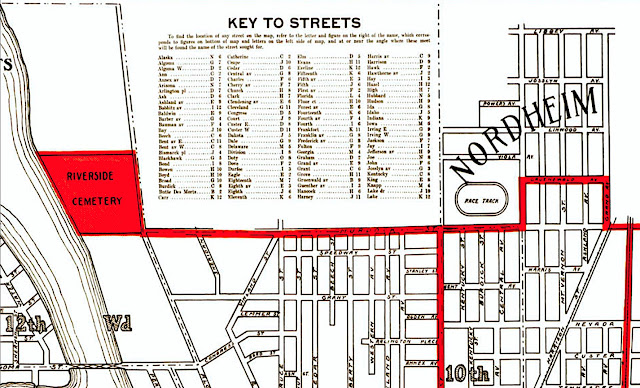In the last year of his life, Wilhelm Kohlhoff shared a beer recipe that was so familiar to him that he could recite it from memory more than 50 years after he last brewed it. Kohlhoff was once a lead brewer at Peoples Brewing Company in Oshkosh. The beer he recalled was Peoples Bock; a malty, amber lager that Kohlhoff brewed annually for more than a dozen years. On March 18, Bare Bones Brewery in Oshkosh will pay tribute to Kohlhoff with a new release of Peoples Bock made from the recipe he provided.
 |
| Wilhelm Kohlhoff |
Kohlhoff’s life was as extraordinary as his memory. He was born in 1927 in the north of Germany near the Baltic Sea. As a young man, he apprenticed as a cabinet maker, but his plan for the future was shattered by World War II.
"We lost our part of Germany," Kohlhoff said in an interview I conducted with him in 2018. "They gave it to Poland and we had to get out of the country. We lost everything. A couple million people had to leave Pomerania. A lot of them died."
 |
| Young Kohlhoff in Pommeren. |
At 17, Kohlhoff was conscripted into the German Army six months before the end of the war. Five months later, he suffered a shrapnel wound to his back. Kohlhoff recovered from the injury, but his life was transformed. “The war ended and everybody went their own way,” he said. “I didn't know anybody. I had no home, I had no parents, I had no relatives. I was lost."
He wandered to Bavaria in the south of Germany where Kohlhoff found work at a brewery in the town of Stettfeld. "There was a brewery in a little tavern,” Kohlhoff said. “I went in to get something to eat. It was hard to get food at that time. There was a boss there, the owner. He said, 'Where are you going?' I told him I didn't know. I told him I was looking for a job. I needed to get at least room and board so I could sleep and eat. He said, 'I got a brewery in the back. I need a helper.' So I stayed with him and learned to brew beer."
Kohlhoff rebuilt his life. He married in 1948 and started a family. In 1952, the Kohlhoffs migrated to America as part of a program for the resettlement of people displaced by the war. A year later, they came to Oshkosh, and Wilhelm began working as a brewer at Peoples Brewing.
 |
| Kohlhoff in Oshkosh. |
The relative calm of brewery life was restorative. The friendships he made were affirming. During one of our interviews, Kohlhoff leafed through pictures I had collected of his former coworkers. Though five decades had passed, he recalled each of their names. As Kohlhoff told stories about them, he fell into using their nicknames. "They all had funny names," he said. "They called me Bill. Nobody ever called me Wilhelm."
In 1966, Kohlhoff retired from brewing to take a job at the Buckstaff Company in Oshkosh. "They paid me a quarter an hour more and they gave me 48 hours a week with time and a half," he said. "I was married with four kids, so that helped. And I got back to my carpenter training. I'm a cabinet maker from the start. I learned it from my dad."
Kohlhoff reconnected with the brewing community in Oshkosh in 2019, more than 50 years after he left the brewhouse at Peoples. With the help of family and friends, he met several Oshkosh homebrewers and professional brewers who had become aware of the German brewmaster in their midst.
 |
| Kohlhoff with his daughter Margaret. |
Margaret Meyer was instrumental in bringing her father to the attention of a younger generation of brewers. “My dad was a pretty humble person and I think he was overwhelmed to even think that anyone still cared about this stuff,” she said. “That was such a unique opportunity for him. I just think he never expected the attention or the interest or even to talk to other brewers again. I know he thoroughly enjoyed the whole experience. It meant a lot to him.”
The appreciation was mutual. Kohlhoff connected his younger counterparts to a period of the brewing culture here that was lost when Peoples closed in 1972. He was the last of the German-born brewers to make beer in Oshkosh. “I hope he felt like a rock star,” said Jody Cleveland, head brewer at Bare Bones. “He was to us. Getting to meet him was great.”
 |
| Kohlhoff with Bare Bones brewer Jody Cleveland. |
A plan was afoot to get Kohlhoff back into the brewhouse to take part in brewing one of the recipes he remembered using at Peoples. That became unattainable when Kohlhoff passed in May 2019. The bock beer recently made at Bare Bones was produced using the process and materials Kohlhoff specified. All that was missing was Wilhelm.
Peoples Bock will be released on draft and in cans at noon on Saturday, March 18 in the taproom at Bare Bones Brewery.
A slightly different version of this article appears in today's Oshkosh Herald.












































